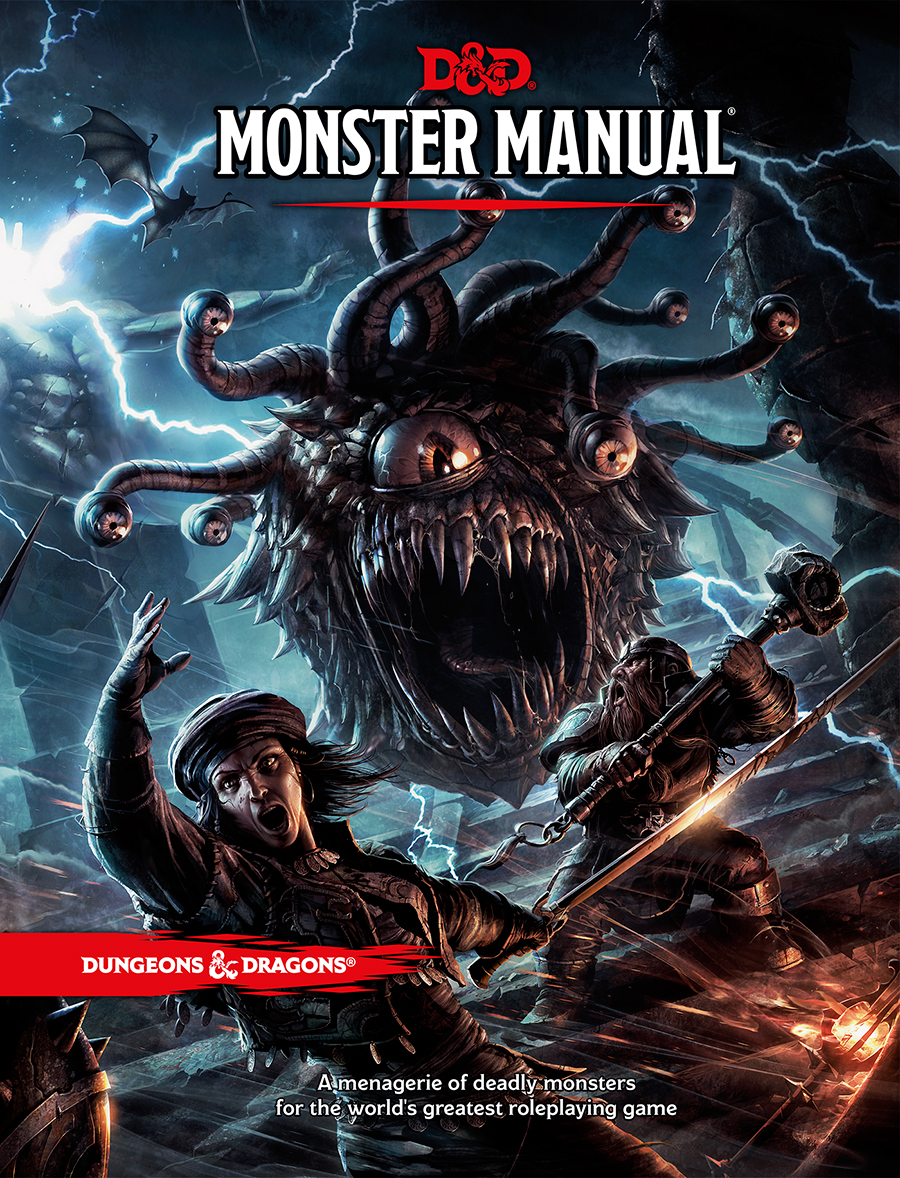A lot of people think Dungeons & Dragons is a game about exploring dungeons to find treasure and fighting monsters, especially dragons. While they’re not wrong as far as it goes, it doesn’t go nearly far enough. It’s less a message, or a type of content, than it is a medium for exploring content. Apropos Marshall McLuhan,[i] Dungeons & Dragons can’t be understood as content-neutral. Dungeons & Dragons, I’d argue, has as much to do with an environment of collaboration and modes of exploring the world as it does with dungeons or dragons.
Dungeons & Dragons, first developed in the late 1960s and early 70s by fantasy wargamers Gary Gygax and Dave Arneson,[ii] arose out of the men’s desire to have a context for the battles they staged with their miniatures. What they created was a way to enfold the battles in story to make them meaningful—and not just one story that ended with a battle, but a series of battles woven together by non-combat events. From that initial desire to “personalize the massive battles of their fantasy wargames with the exploits of individual heroes,”[iii] Gygax and Arnseon built a game system that allowed heroic characters to have ongoing stories.

On its fifth edition, referred to as 5E by gamers, Dungeons & Dragons still consists of the same core features now as it had in its first iteration. It is a tabletop roleplaying game, which means that players sit around a table together (real or virtual) and enact or at least describe the actions of their characters. The play is guided by the “dungeon master” or DM, who advances the story by playing antagonists, secondary characters, describing settings, and setting problems for the characters. The DM also adjudicates the results of any action a player states that their character takes, often with the aid of a dice roll. The dice rolls introduce an element of chance that simulates factors like luck, internal fortitude, and the strength of a character’s desire.
While Wizards of the Coast, the company that publishes Dungeons & Dragons releases content, the players and the DM are the ones who tell the story. Even if a group picks up a campaign module, like the forthcoming, Descent to Avernus,[iv] with a story designed by Wizards RPG Team, their party will have a different story to tell in the end than any other; the characters players design, the choices they make, the rolls of the dice and what they do along the way will all shape the outcome of the story. And it’s entirely possible to use the gaming system to tell stories set in science fiction worlds, modern worlds, any kind of story imaginable. Like a backyard fence that makes it safe for a toddler to explore their freedom, the Dungeons & Dragons core rule books provide a framework, but what players experience is up to them.
For most of my life, I’ve been one of those people who thought Dungeons & Dragons was literally dungeons and dragons. This, even though one of my boyfriends after college played and for awhile I got obsessed with the Monster Manual. Hey, I read a lot of fantasy and beholders are badass! For years I resisted when my non-romantic lifemate insisted she needed to play again and that we should find a game. I finally broke down and agreed, I’d play just once, and then she wasn’t allowed to bug me about it ever again.
By the time I’d built my first character, a messed-up mixed-bag warlock/mystic Tiefling-Aasimar named Ireqis Arcanscape, I was hooked. The DM was new, the party had two evil characters in it, one of the players created a giant chicken familiar that shot laser beams from its eyes, and one had a familiar that was an otter with IBS. Honestly, nothing about that campaign should have been fun. I had no idea what I was doing. Yet somehow, before we’d even finished it, I’d bought the books and was preparing to DM. Now, my week isn’t complete without at least one four-hour Dungeons & Dragons session, but more likely, it’s two or three. And ask me about the characters I’m waiting to play…

Like I said at the beginning, Dungeons & Dragons isn’t content-neutral. It shapes the story around specific types of activities: social interactions, world exploration, and combat. So, any content played through the system will have these elements; however, the structure remains, if not invisible at least not cumbersome, and it allows players and DMs to explore themes such as mortality, environmental disaster, duty, idealism, tyranny—the possibilities are endless. The flexibility of the game and the ability to explore new worlds makes the game fun, but it’s playing with people, learning to act as a team, developing different relationships with the same people as different characters in one campaign after another that makes Dungeons & Dragons great.
—-
[i] McLuhan, M. (n.d.). Living in an Acoustic World. Retrieved from http://www.marshallmcluhanspeaks.com/lecture/1970-living-in-an-acoustic-world/?t=48m42s
[ii] Peterson, J. (2014). History Forty Years of Adventure. Retrieved from https://dnd.wizards.com/dungeons-and-dragons/what-dd/history/history-forty-years-adventure
[iii] New to the Game: What is D&D? (2014). Retrieved from https://dnd.wizards.com/dungeons-and-dragons/what-is-dd
[iv] Baldur’s Gate: Descent into Avernus Adventure for levels 1-13 By Wizards RPG Team. (2019). Retrieved from https://dnd.wizards.com/products/tabletop-games/rpg-products/baldursgate_descent

3 Comments